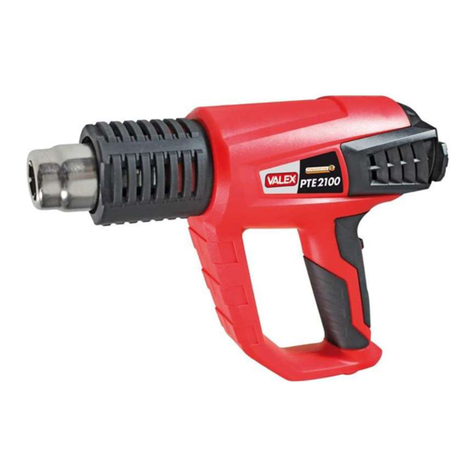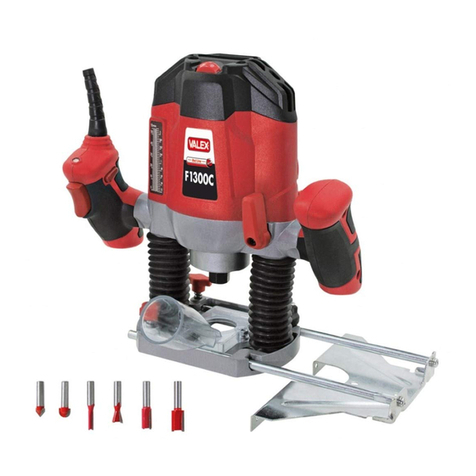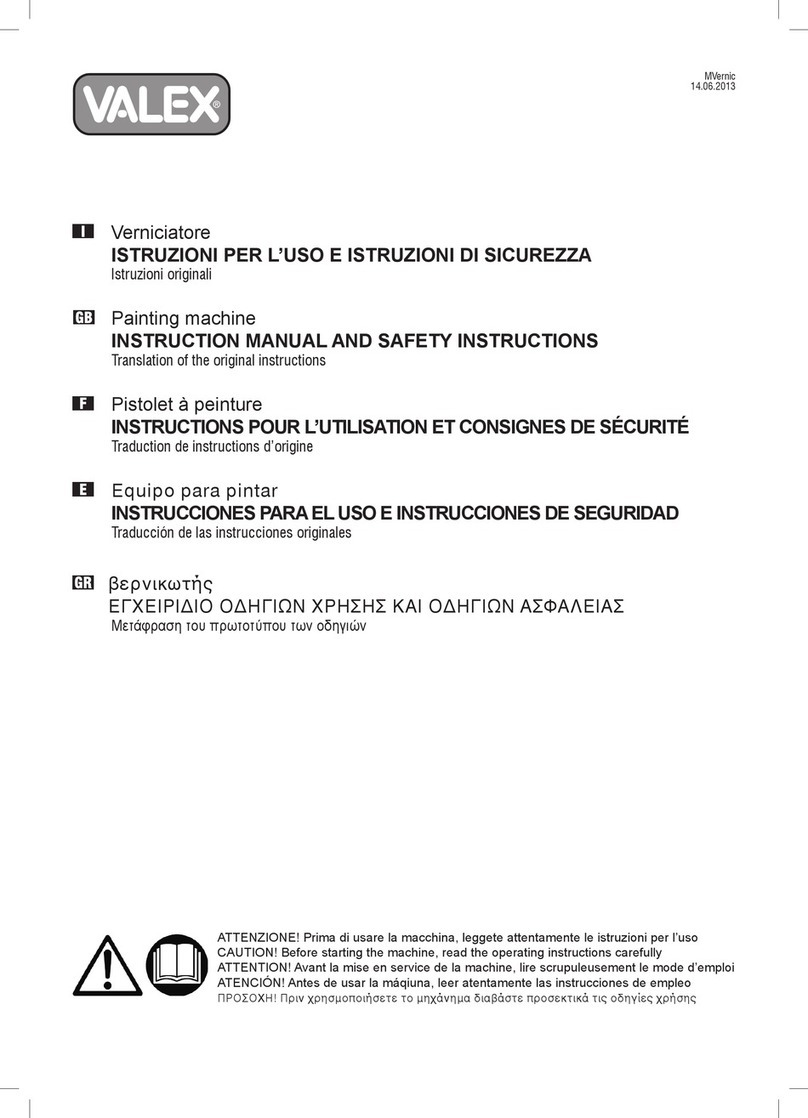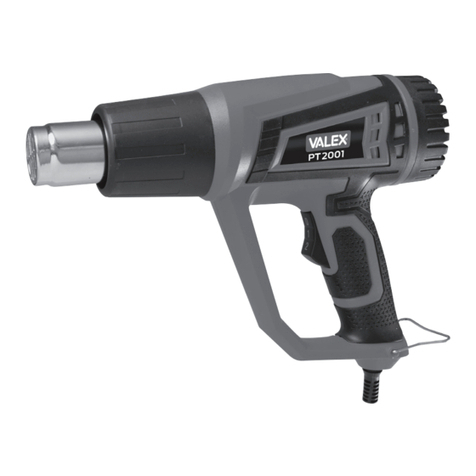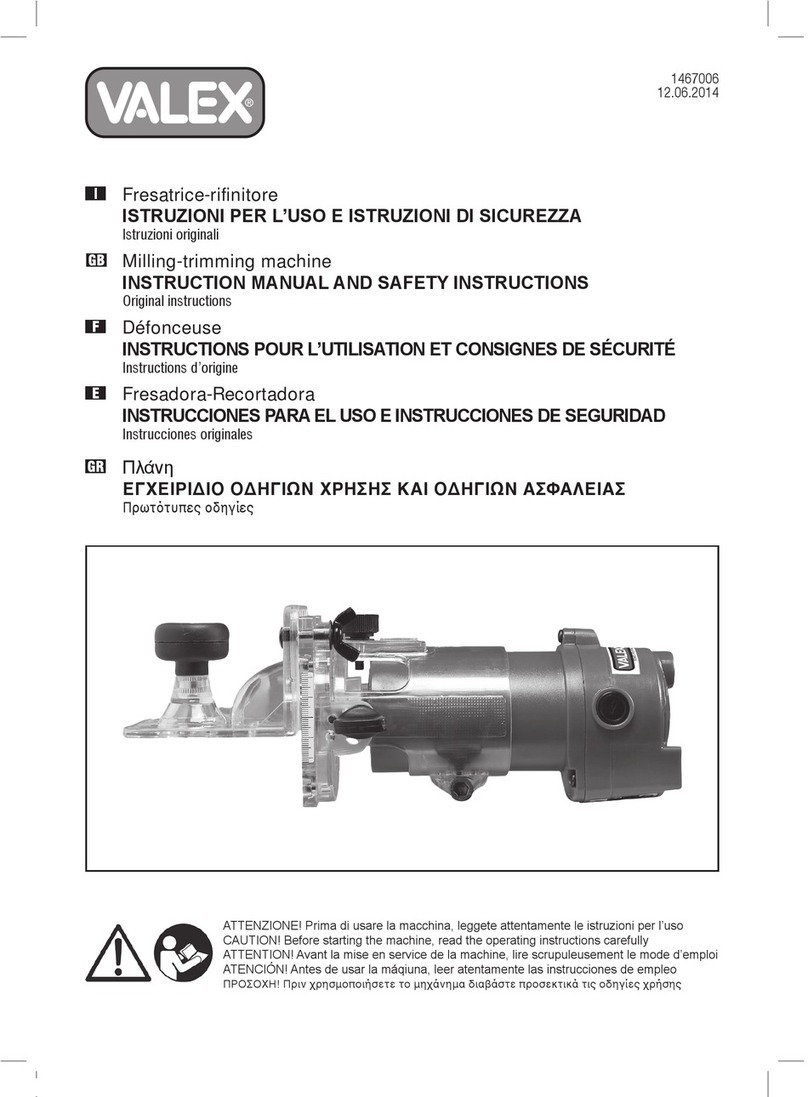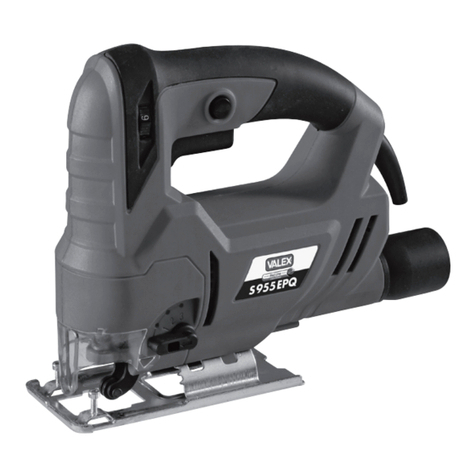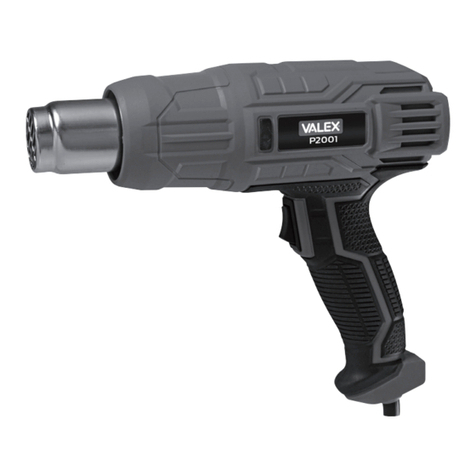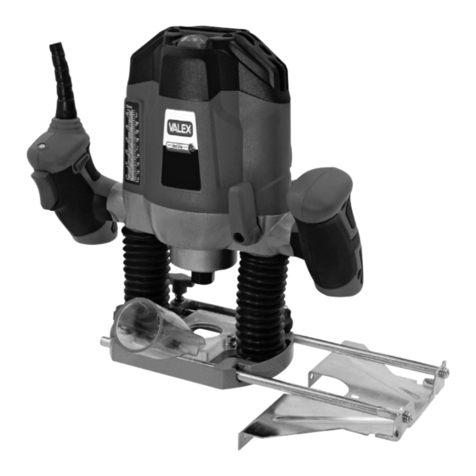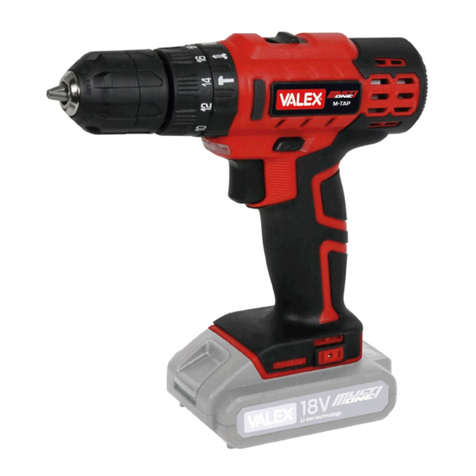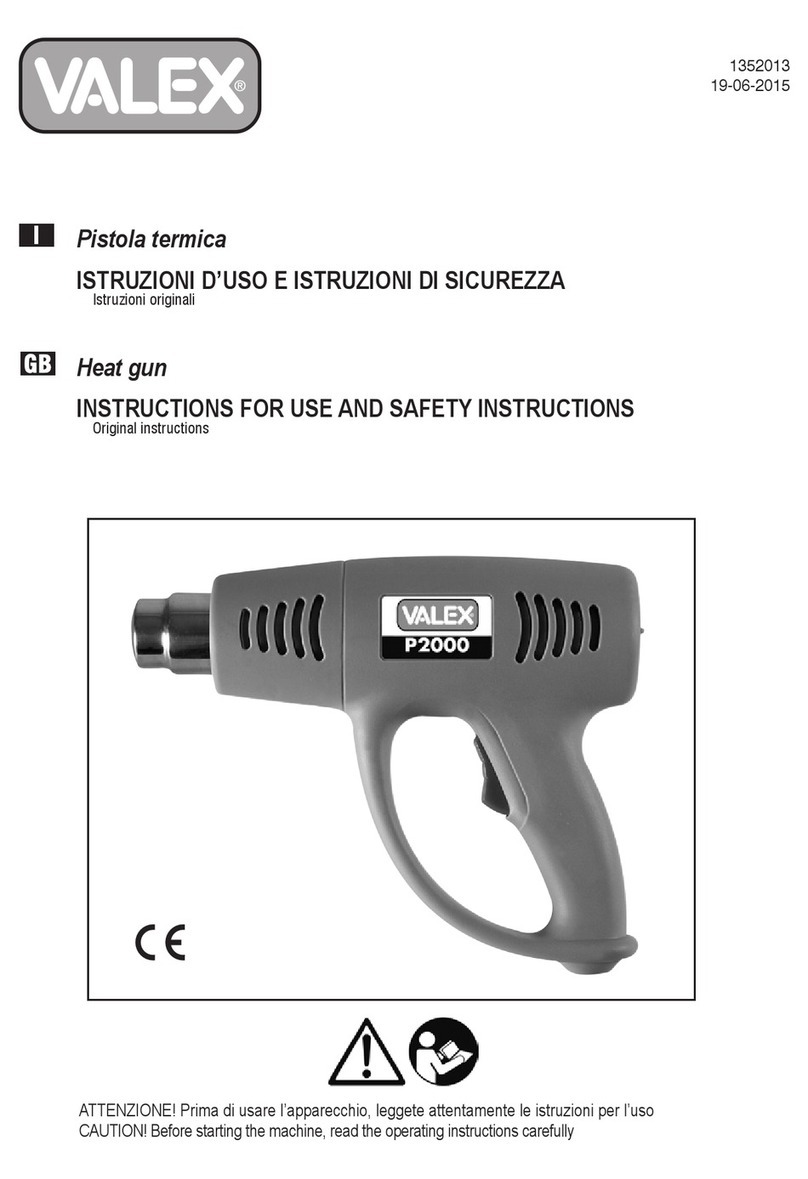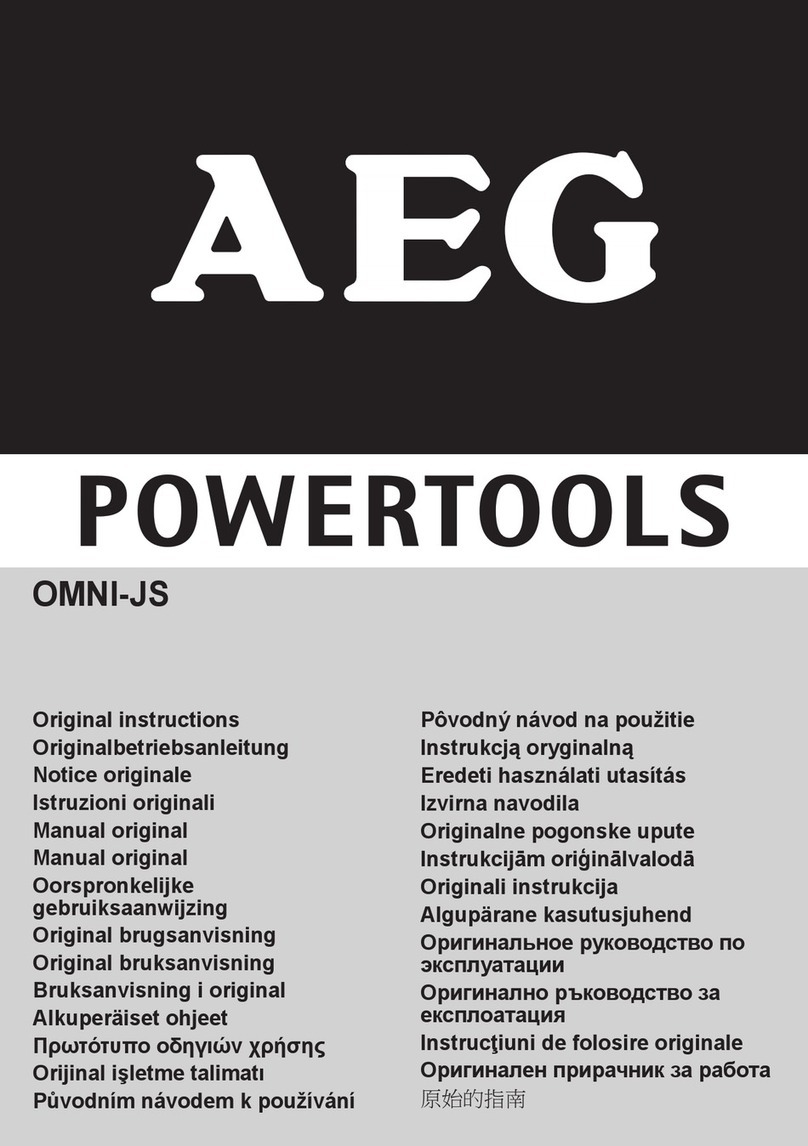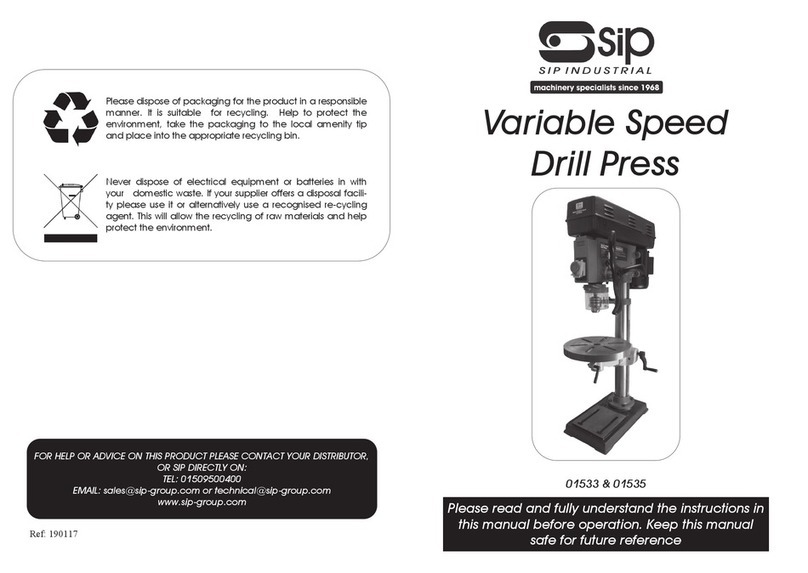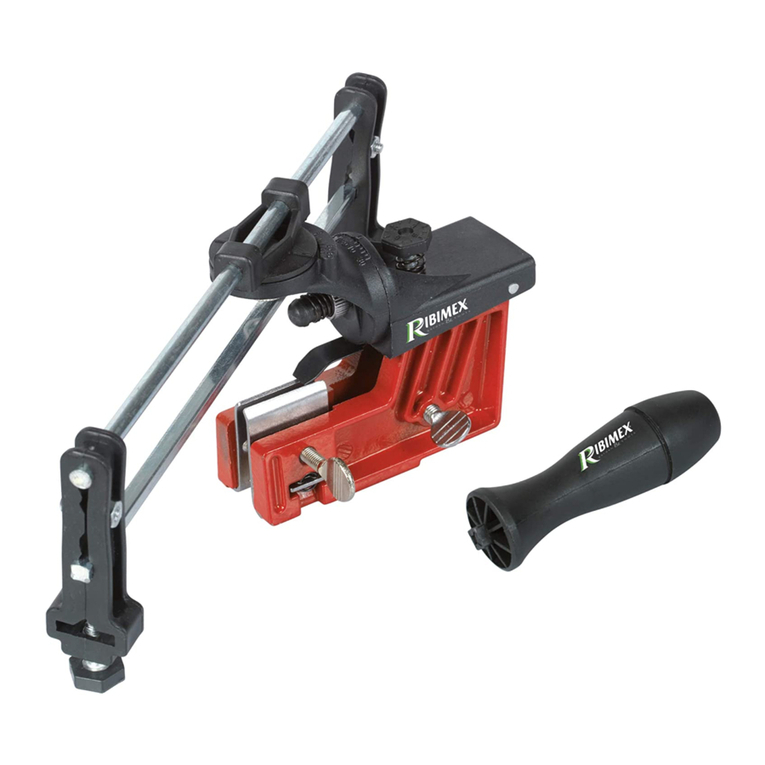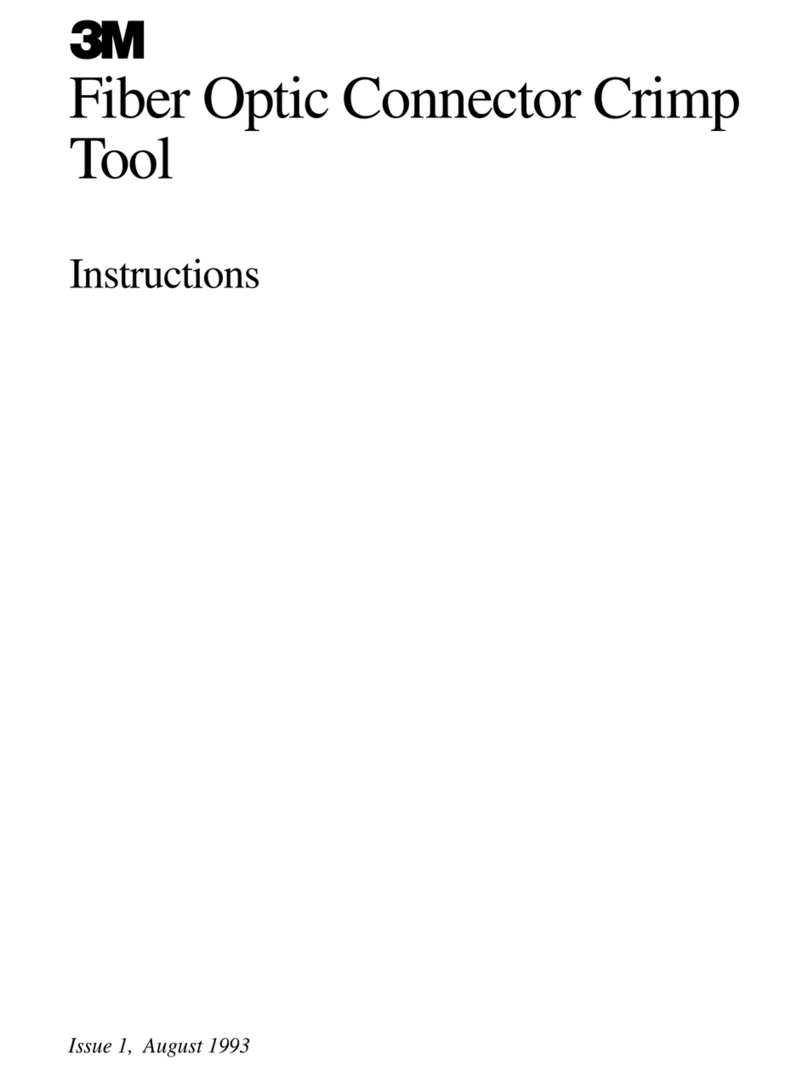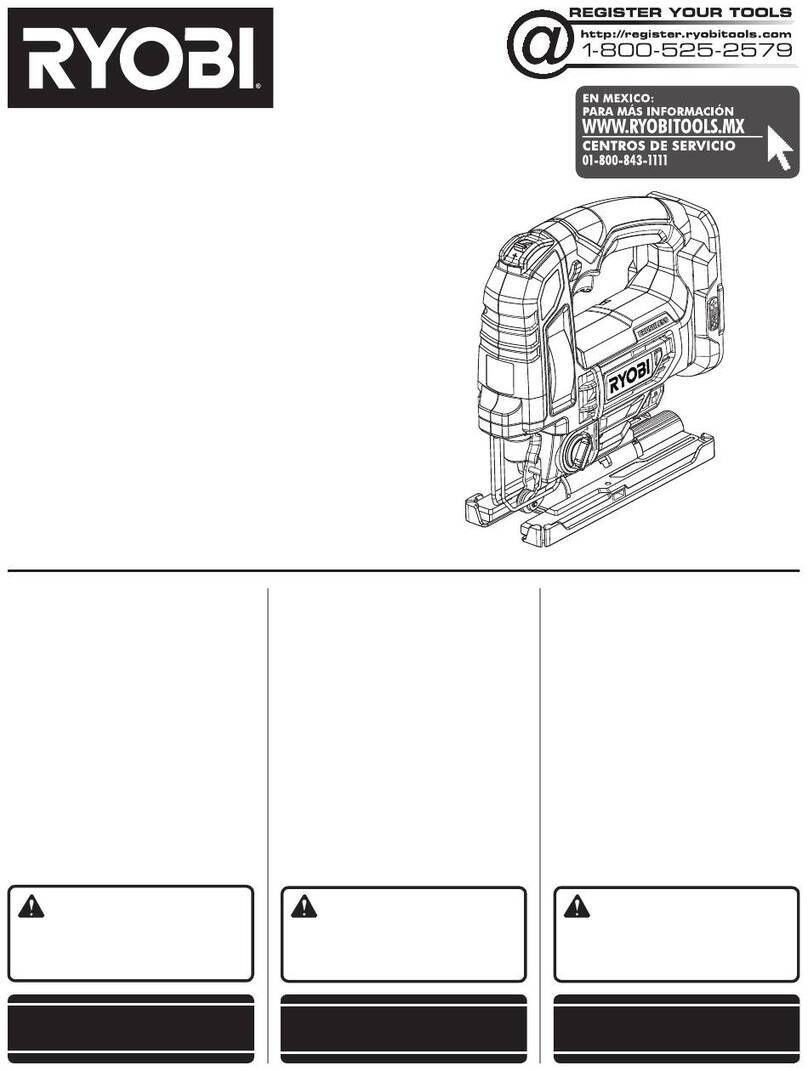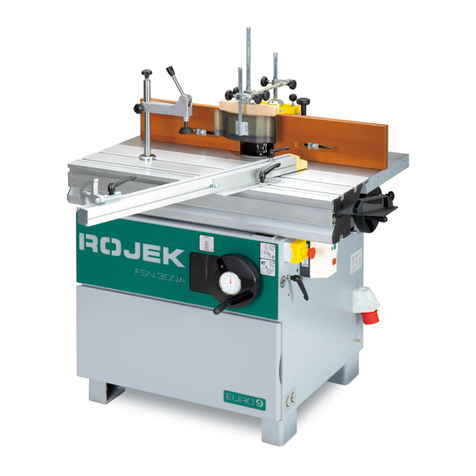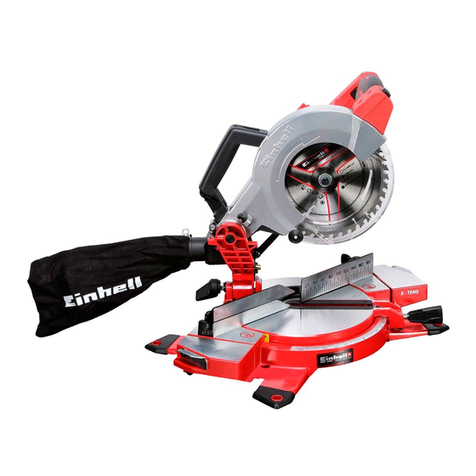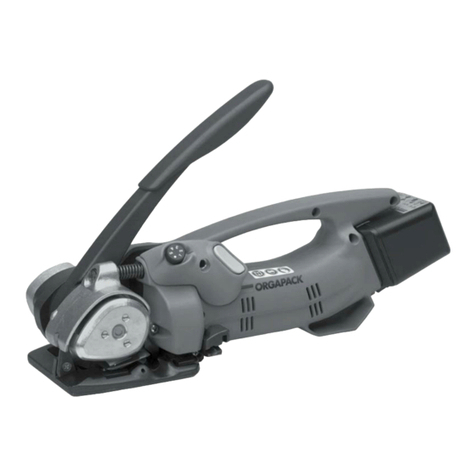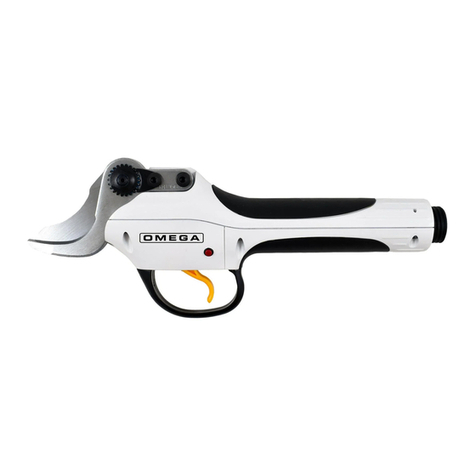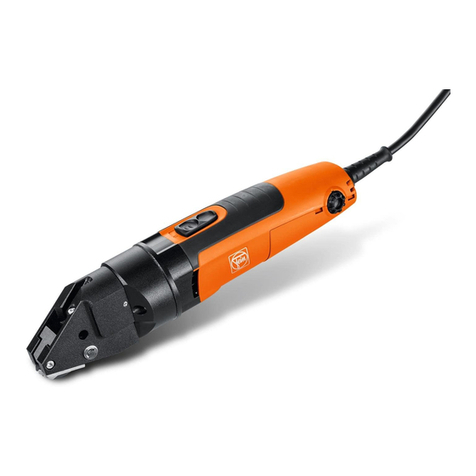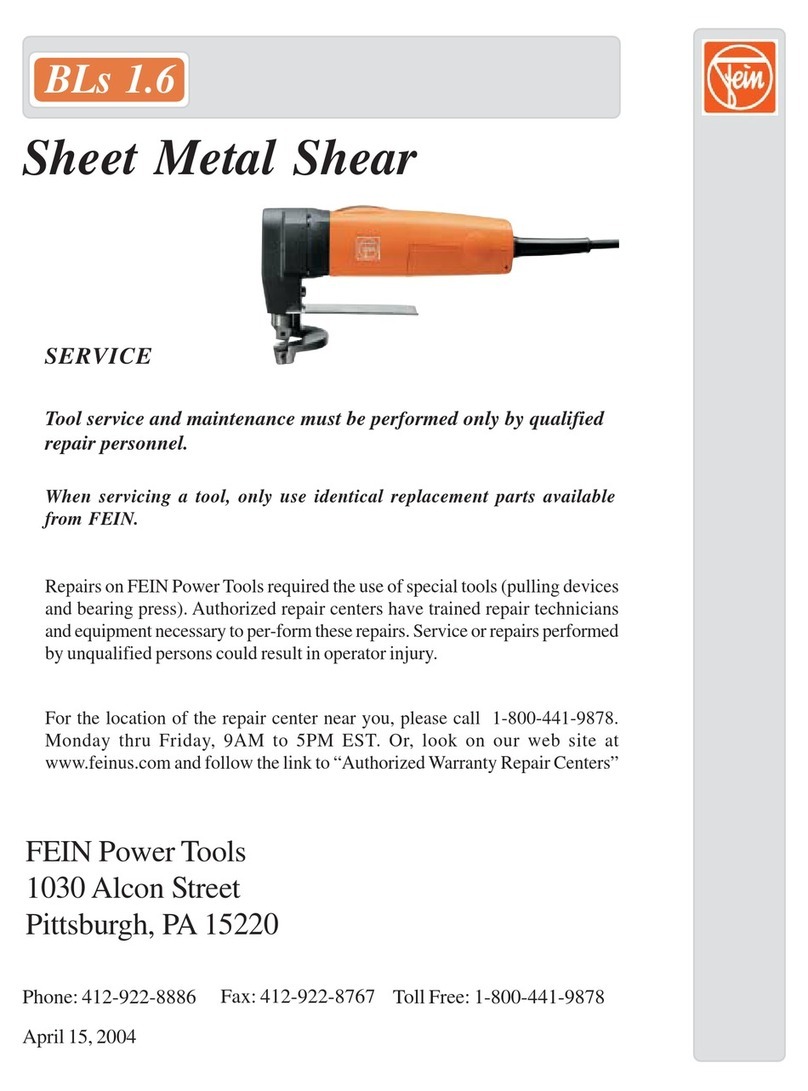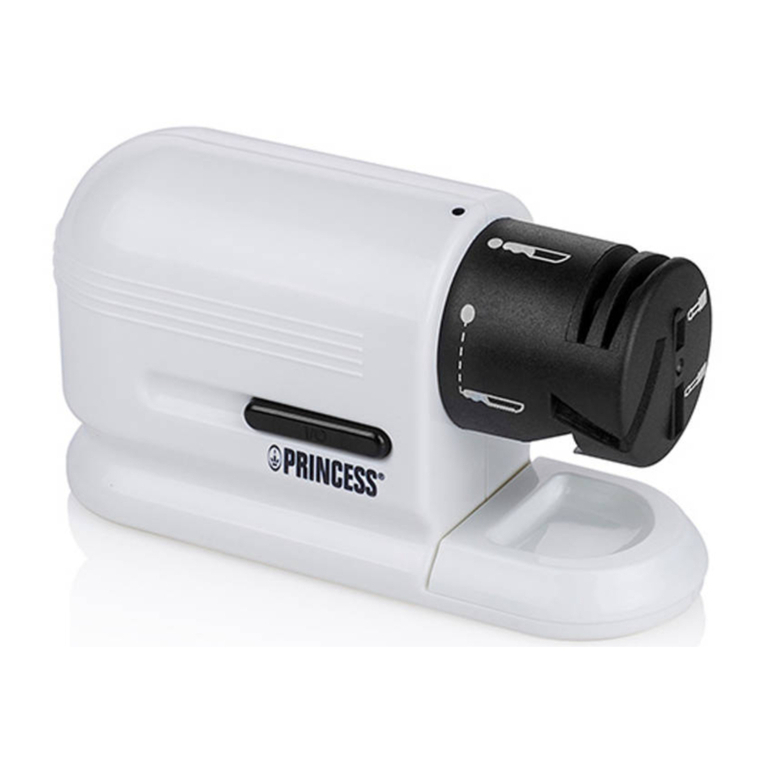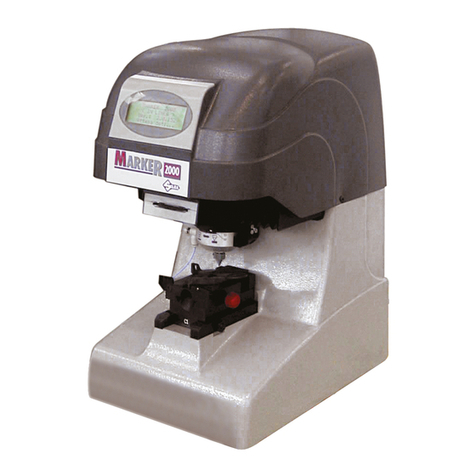
- 9 -
agenti atmosferici.
- che attorno sia prevista un’ampia zona opera-
tiva libera da impedimenti.
- che vi sia una buona illuminazione.
- che sia utilizzata in vicinanza dell’interruttore
generale con differenziale.
- che l’impianto di alimentazione sia dotato di
messa a terra conforme alle norme (solo se
l’utensile elettrico è di classe I, cioè dotato di
spina con cavo di terra).
- che la temperatura ambiente sia compresa tra
10° e 35° C.
- che l’ambiente non sia in atmosfera infiamma-
bile/esplosiva.
Estraete la macchina ed i componenti e verificate
visivamente la loro perfetta integrità; a questo
punto procedete ad una accurata pulizia.
MONTAGGIO RACCORDO DI SCARICO (fig.C)
Inserite il raccordo di scarico (12) nel foro situa-
to nella parte posteriore dell’utensile.
MONTAGGIO LAMA (fig.D)
ATTENZIONE! Prima di procedere scol-
legate la spina dalla presa di alimentazione
elettrica.
ATTENZIONE! Le parti taglienti provocano
gravi ferite, utilizzate i guanti di protezione!
ATTENZIONE! Il montaggio della lama deve
essere eseguito a perfetta regola d’arte. Un
montaggio errato genera pericoli molto gravi.
Prima di procedere osservate attentamente i
componenti dell’utensile e la fig.D. Se non avete
dimestichezza con la manipolazione e l’assem-
blaggio di componenti meccanici, vi consigliamo
di rivolgervi ad un centro assistenza autorizzato.
1. Indossate i guanti a protezione delle mani.
2. Scollegate la spina dalla presa di alimen-
tazione elettrica.
3. Appoggiate l’utensile su un banco da lavoro
(fig.D).
4.Sollevare verso l’alto la leva di sblocco
del morsetto in modo da aprire la tenuta e
mantenetela aperta.
5. Afferrate la lama (6) nella parte dentata ed
infilate a fondo l’estremità opposta della lama
(forma a T) nel mandrino in corrispondenza
del taglio. N.B. il lato dentato della lama dovrà
essere rivolto in avanti rispetto l’utensile.
6. Verificate che la lama sia correttamente posi-
zionata nella mezzeria del rullo guidalama (9).
7. Rilasciate la leva che dovrà ritornare automa-
ticamente nella posizione iniziale e muovete
leggermente la lama in modo da favorirne
l’innesto.
8. Verificare il corretto assemblaggio dei com-
ponenti e il fissaggio della lama.
9.Effettuare una prova di funzionamento a
vuoto per 1 minuto, mantenendo l’utensile
lontano da voi.
COLLEGAMENTO AD UN ASPIRATORE ELETTRICO
(non incluso)
E’ obbligatorio collegare il raccordo di scarico
trucioli (12) ad un aspiratore elettrico, mediante
una tubazione flessibile non metallica (non in-
clusa); in questo modo gran parte della polvere
prodotta verrà evacuata e preserverete la vostra
salute diminuendo drasticamente la polvere
dispersa nell’aria.
AVVIAMENTO ED ARRESTO
ATTENZIONE! Prima di avviare l’utensile
elettrico è obbligatorio indossare i dispositivi
di protezione individuale (non inclusi). Vedi
‘ISTRUZIONI DI SICUREZZA’.
ATTENZIONE! Afferrare saldamente l’uten-
sile nell’impugnatura senza mai abbandonare
la presa, in modo tale che, in caso di pericolo,
possiate arrestarlo immediatamente.
ATTENZIONE! Durante l’utilizzo fate in
modo che nessuno si avvicini alla vostra zona
di lavoro.
Avviamento
Per avviare premete l’interruttore (1)
L’interruttore è del tipo ad azione mantenuta;
pertanto l’utensile elettrico rimarrà acceso per il
tempo che voi mantenete premuto l’interruttore.
Arresto
Per arrestare rilasciate l’interruttore, mantenendo
ben saldo l’utensile.
ATTENZIONE! Dopo lo spegnimento la lama
si muove ancora per alcuni secondi.
Funzionamento continuo
Per un funzionamento continuo è necessario,
dopo aver avviato, premere il pulsante di ritegno
(4) in modo da bloccare l’interruttore.
Successivamente per arrestare la macchina
